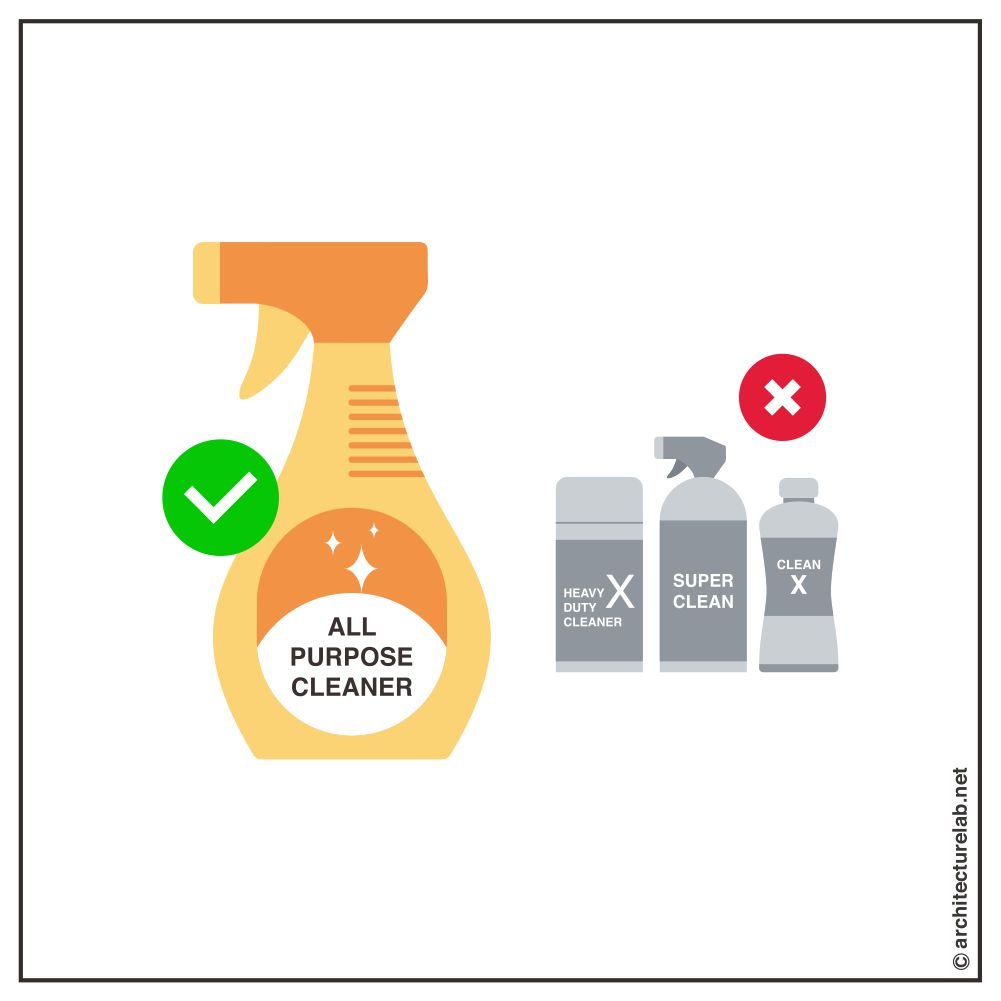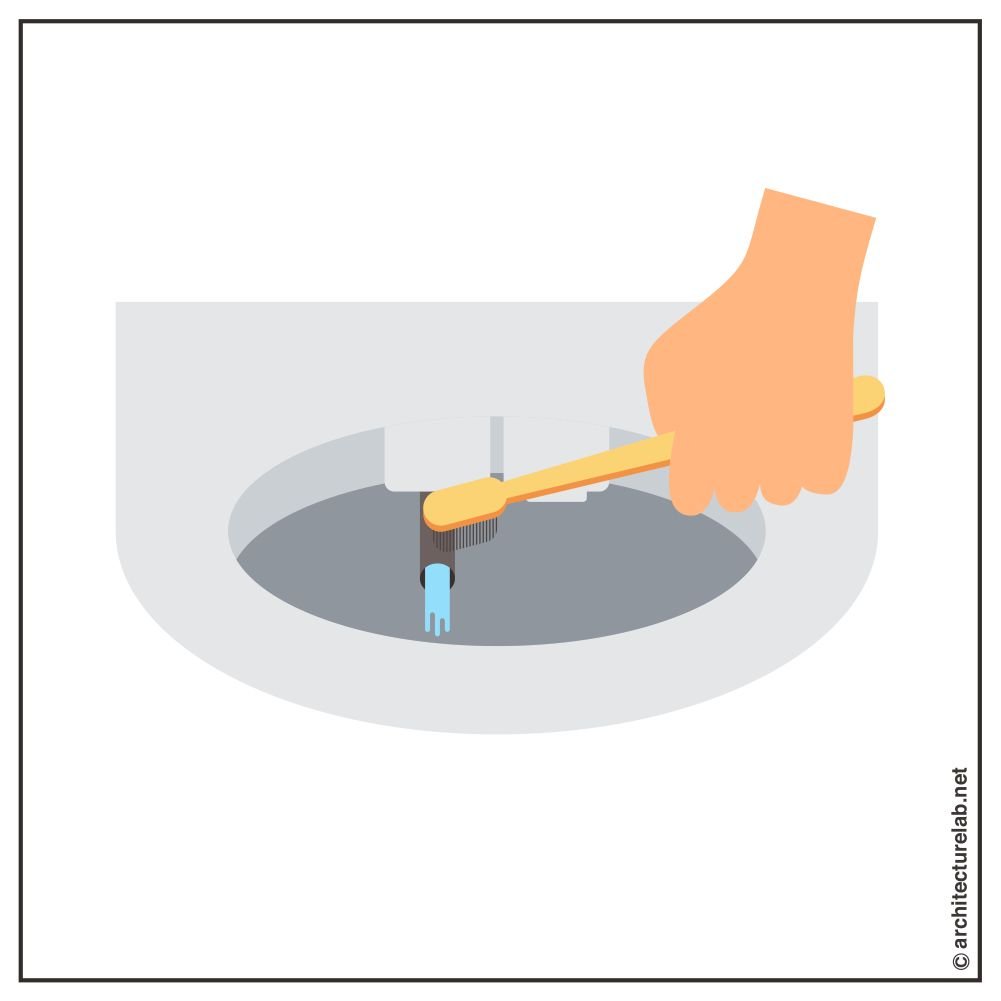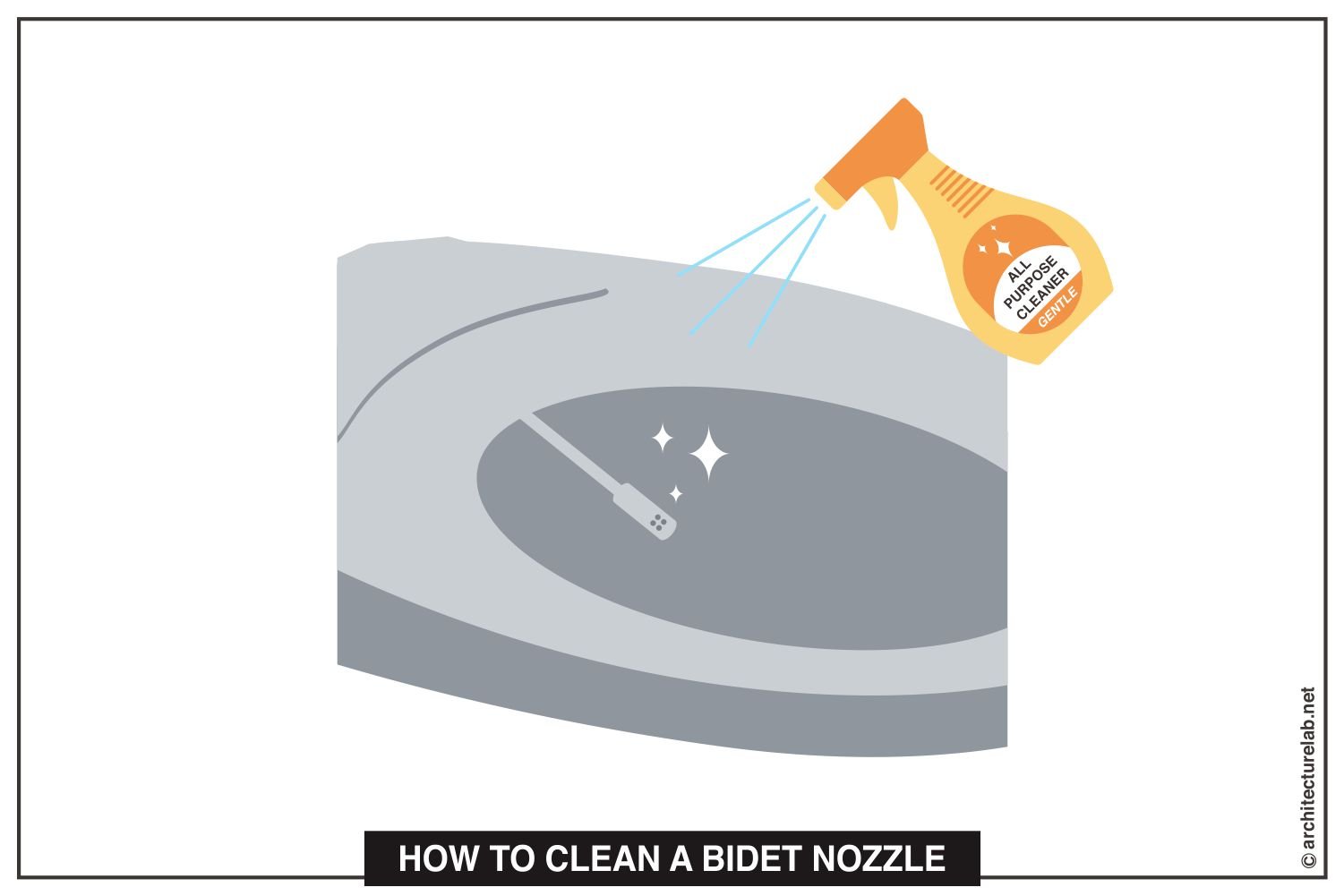Maintaining optimal hygiene and cleanliness in your bathroom extends to all fixtures, including the nozzle of the bidet.
Regularly cleaning the bidet nozzle is essential to prevent a build-up of residue and ensure an effective cleaning experience. In this article, we will provide specific instructions on cleaning a bidet nozzle effectively.
Read on, and let us guide you through the step-by-step cleaning process, highlighting the importance of avoiding harsh chemicals.
How To Clean A Bidet Nozzle?

Self-Cleaning Bidet Designs
Self-cleaning bidet nozzles offer a convenient and hygienic solution for maintaining cleanliness in the bathroom. Their automatic cleaning feature eliminates the need for frequent manual cleaning, providing a hassle-free experience for bidet owners. Whether it’s the rear cleaning nozzle, front wash nozzle, or a bidet with two nozzles, these self-cleaning features ensure a fresh and sanitary experience every time.
Self-cleaning nozzles of the bidet are an innovative feature found in modern bidet toilet seats and bidet attachments. These nozzles are designed to automatically clean themselves after each use, ensuring optimal hygiene and user convenience. Unlike traditional bidet nozzles that require manual cleaning, self-cleaning nozzles of the bidet employ advanced mechanisms to eliminate the need for regular maintenance.
The self-cleaning process typically involves a combination of water spray and gentle cleanser. After each use, the nozzle of the bidet will activate a self-rinsing feature, where water is sprayed through the nozzle to flush away any residual matter. Some bidet models even offer a self-cleansing cycle, where the nozzle moves back and forth while being cleaned with water and a mild cleanser.
For a more thorough cleansing, some nozzles of the bidet have a nozzle cleansing button. Pressing this button activates a stronger spray or pulsating water pressure to remove clogged residue from the nozzle tip. It is important to consult the user manual or contact the manufacturer for specific cleaning instructions, as different bidet seats and attachments may have varying cleaning methods.
Basics Of Cleaning The Nozzle Of A Bidet
The basics of bidet cleaning are essential for maintaining proper hygiene and functionality. Cleaning a bidet nozzle is a straightforward process that can be completed in a few simple steps, as follows:
1. Turn Off The Water Supply
Start by turning off the water supply to the bidet. This step is crucial to prevent any accidental spraying during the cleaning process.
2. Gently Clean The Nozzle
Take a soft cloth or a washcloth and dampen it with water. Gently wipe the nozzle of the bidet to remove any surface dirt or residue. Avoid using abrasive materials or chemicals that could damage the plastic or metal parts of the bidet.
Use a mild cleaning agent such as dish soap for a deeper clean. Apply a small amount of soap to the damp cloth and gently scrub the nozzle. Rinse the cloth thoroughly to avoid leaving any soapy residue behind.
3. Cleaning Stains
If the bidet nozzle has stubborn stains or mineral build-up of hard water, you can try using a mixture of water and vinegar. Mix equal parts vinegar and water in a spray bottle, then spray the solution onto the nozzle. Allow it to sit for a few minutes before wiping it clean with a soft cloth.
4. Rinse And Dry
Once the cleaning process is complete, rinse the nozzle of the bidet with water and ensure it is completely dry before using it again.

Discovering The Right Products For Cleansing The Nozzle Of The Bidet
Cleaning the bidet nozzle ensures it functions effectively and provides a hygienic experience. To clean a bidet nozzle, you will need the following tools and materials:
1. Soft Washcloth Or Textile
A gentle and soft material is ideal for cleaning the bidet nozzle without causing any damage.
2. Mild Cleaning Agent
Avoid using a harsh chemical substance such as benzene or hydrochloric acid. Instead, opt for mild cleaners like Windex or Simple Green to effectively remove any residue or build-up.
3. Toothbrush
Use a soft-bristled toothbrush to clean hard-to-reach areas and crevices around the nozzle.
Tackling Other Bidet Nozzles
To effectively clean other nozzles of the bidet, such as a handheld bidet, start by disconnecting it from the water supply. This can usually be done by unscrewing the hose and connecting other bidet seats to the water source.
Next, inspect the bidet for any dirt or debris. If present, gently wipe the surface with a sponge or soft cloth soaked in a mild cleanser. Avoid using harsh chemicals or abrasive materials that could damage the bidet.
Finally, reattach the bidet to the water supply, ensuring a tight connection to prevent leaks. It is recommended to clean bidets regularly, ideally, once a week, to maintain optimal cleanliness and prevent the accumulation of bacteria.

Regular Bidet Maintenance Practices
Bidet maintenance is essential to ensure optimal performance and hygiene. Follow these steps to maintain your bidet properly:
1. Clean The Bidet Nozzle
Wipe the bidet nozzle with a soft cloth or sponge. Use warm water and mild soap to remove any residue or build-up. However, do not use abrasive or acidic chemicals that could damage the nozzle.
2. Clean The Bidet Seat
Wipe down the bidet seat with a mild disinfectant or non-abrasive cleaner. Ensure all surfaces, including the mounting plate and controls, are thoroughly cleaned. Rinse with water and dry with a soft cloth.
3. Check For Clogs
Regularly inspect the water supply hose and nozzle of the bidet for any clogs or blockages. If necessary, use a thin toothbrush or toothpick to unclog the nozzle. This step is crucial to maintain proper water flow and prevent malfunctions.
4. Utilize Self-Cleaning Features
Some bidet seats come with self-cleaning or self-rinsing features. Activate these functions per the manufacturer’s instructions to ensure the nozzle remains clean and hygienic.
By following these maintenance steps, bidet owners can keep their bidets in prime condition, promoting cleanliness and longevity. Always refer to the user manual provided by the manufacturer for specific maintenance instructions tailored to your bidet model, be it by Bio Bidet or Brondell Swash. If you encounter persistent issues or require further assistance, consult a bidet expert or contact the manufacturer’s customer support for guidance.
Warning: Extreme caution is required when cleaning the nozzles of the bidet. Improper handling may lead to harmful sprayback.
Can I use regular household cleaning products to clean the bidet seat nozzle?
Yes, you can. But it is recommended to avoid using harsh chemicals on the bidet nozzle. Instead, use mild soap or a vinegar-water mixture to clean the rear nozzle and the front nozzle. This helps maintain the functionality of the bidet and prevents any damage.
How often should I clean the bidet nozzle?
It is advisable to clean the bidet nozzle at least once a month. Regular cleaning ensures optimal hygiene and functionality. However, if you notice any residue or build-up, clean it more frequently to prevent clogging or decreased water flow.
Can I clean the bidet nozzle without removing the converter kit?
Yes, you can clean the bidet nozzle without removing the bidet converter kit. Simply detach the bidet nozzle from the bidet seat and clean it separately. Remember to follow the manufacturer’s instructions carefully on how to detach and reattach the nozzle correctly.
What should I do if the bidet nozzle gets clogged?
If the bidet nozzle becomes clogged, you can try using a toothpick or a small toothbrush to remove any debris or residue. If the clog persists, consult the user manual of the bidet or contact the manufacturer for further assistance in unclogging the nozzle.
Are there any additional steps during the bidet installation process?
It is crucial to thoroughly read and follow the manufacturer’s instructions during the bidet installation process. Additionally, ensure that all the connections are secure and free of leaks. Once installed, perform a test run to check the functionality and adjust the nozzle position if necessary.
Conclusion
Maintaining a clean bidet attachment or bidet toilet is an essential aspect of bidet hygiene and functionality. Proper cleaning of the bidet nozzle is crucial to ensure optimal performance and prevent potential clogs or malfunctions.
Bidet owners should familiarize themselves with the specific cleaning instructions provided by the manufacturer of their bidet, taking into account any self-cleaning feature that may be available. Regularly cleaning the nozzle, both front and rear, and ensuring cleanliness underneath the toilet seat are important practices to uphold hygiene standards.
By adhering to these cleaning practices, bidet owners can prolong the lifespan of their bidets and enjoy the benefits of a clean and efficient bidet toilet seat.



